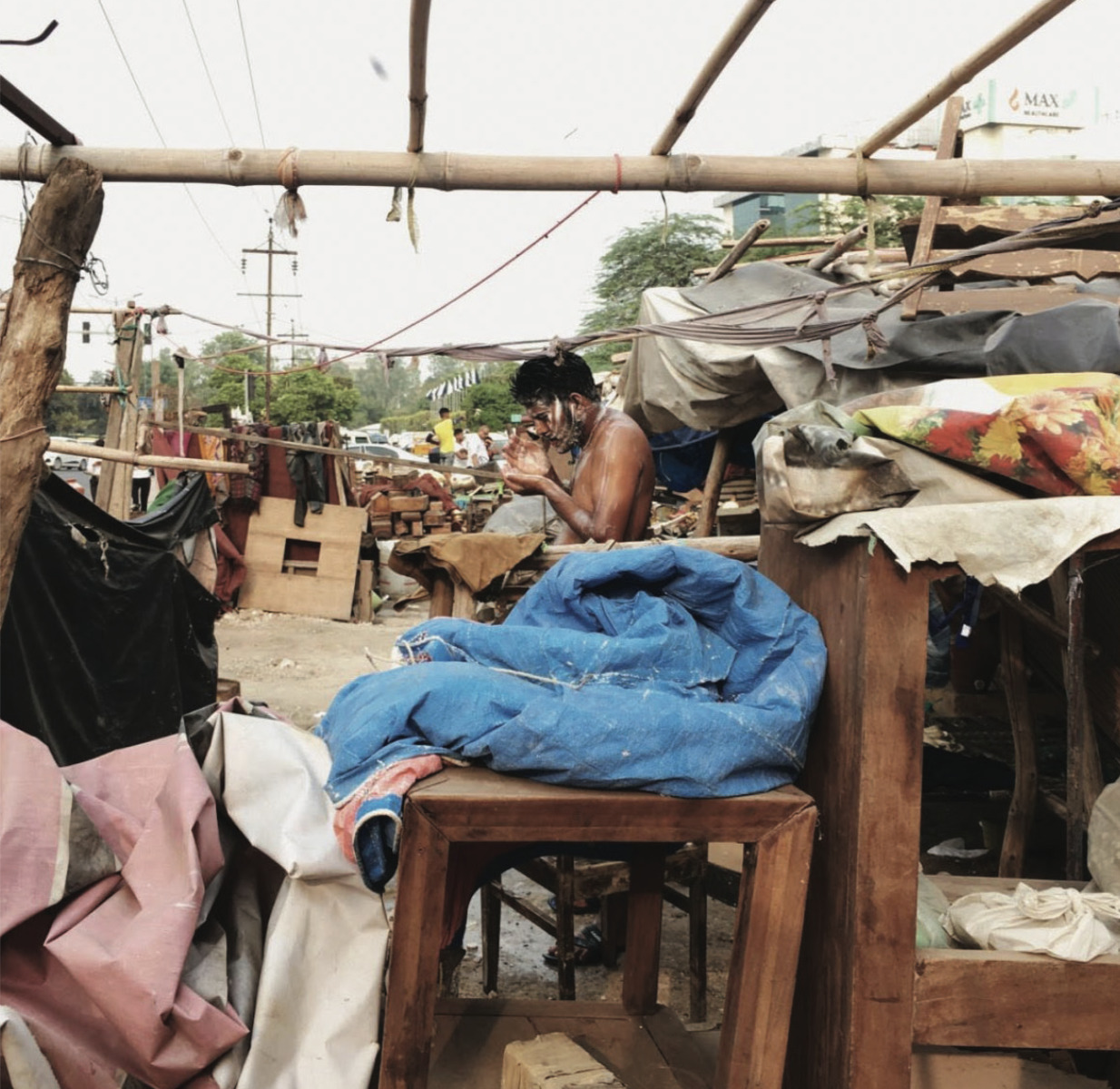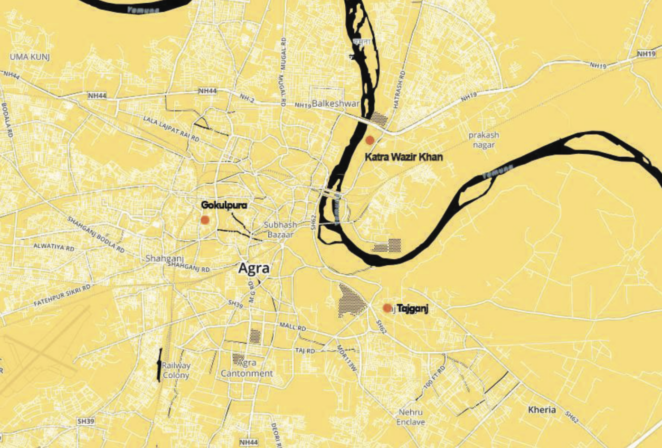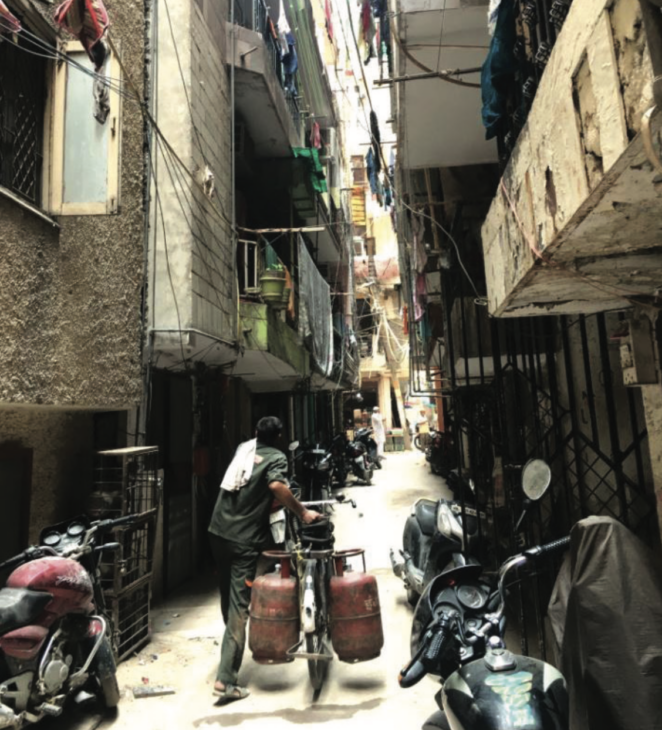Human Face of Climate Change: From Risk to Resilience in Indian Cities

Introduction
This report considers the impacts of our changing climate on people living in three Indian cities – Agra, Delhi and Panaji.It details broad impacts to communities, but also tells the stories of real people living in these areas, and how their livelihoods and wellbeing are being impacted by climate change.
The report is organized in three sections. It includes sections on ‘Changing Climate, Changing Rivers’, which considers the impacts of contaminated water from the the Yamuna River on the residents of Agra; the ‘Double Burden of Climate Change’, which discusses climate change impacts on the informal residential settlements of Hauz Rani and Khirki in Southern Delhi; and ‘Rising Seas and Coastal Livelihoods’, which looks at the vulnerability of India’s coastline near the city of Panaji to sea level rise, beach erosion and other climate impacts.
This weADAPT article is an abridged version of the original text, which can be downloaded from the right-hand column. Please access the original text for more detail, research purposes, full references, or to quote text.
Agra: Changing Climate, Changing Rivers
Vulnerable communities living in informal settlements along the Yamuna riverbed in the city of Agra face many challenges, by far the most critical of which is access to clean water and sanitation. Drainage channels carry untreated wastewater from the city toward settlements, which results in stagnated wastewater accumulating that is contaminated and unfit for drinking. Agra has 417 informal settlements, which make up about 56% of the urban population. The city is rapidly urbanizing due to growth in the tourism industry, and settlements along the riverbed have been swelling in size.

Challenges to residents of these settlements are aggravated by climate change. There is increased likelihood of flooding in areas close to the river bed due to changes in precipitation patterns and more pronounced seasonal variation in the intensity of river flow. The general trend, however, is of dwindling water flows throughout Agra – the groundwater level is steadily declining, and communities are therefore often forced to pay for private access to water via informal water markets. In addition, due to the dense informal settlements with inadequate shading, rising temperatures have created urban heat islands, causing physiological stress to residents in terms of heat stroke, exhaustion, and cramps.
The ability of households to cope with these changes is shaped by their social conditions; caste for example can strongly influence their resilience to climatic changes.The majority of Agra’s informal settlements are comprised of scheduled tribes (ST), scheduled castes (SC), and other backward classes (OBC), i.e. those who come from poor socio-economic backgrounds. They are also more economically vulnerable due to reliance on irregular and low-paid work, increasing their susceptibility to the negative impacts of climate change. Inhabitants which are exposed to contaminated water are therefore likely to suffer from skin irritation, respiratory problems and other diseases as a result.
To seek a better quality of life, manage scarce resources like water, and deal with multiple stresses including climate impacts, individuals need to navigate the social structures that reinforce vulnerability.Many households, especially in the area of Tajganj, have lived together for decades, resulting in strong social bonds among communities that come from the same caste groups. Communities often come together to seek solutions to better their conditions, for example to pool money to solve issues of water shortage or to pool efforts to maintain cleanliness and hygiene in their immediate surroundings.
Governing institutions in Agra lack the tools, resources and capacities they need to effectively serve an increasing informal population and the people themselves have limited social mobility and access to information. In order to change that, developing adaptation strategies at multiple scales with the government, civil society, and private sector is imperative.
Delhi: Double Burden of Climate Change
Hauz Rani and Khirki are informal residential settlements clustered around green spaces and historical monuments in Delhi’s affluent South Delhi district. Hauz Rani is a predominantly Muslim settlement which is densely packed and with limited access to urban services. Khirki village has more diverse occupants (from middle-class households to temporary housing), with wall-to-wall houses and narrow lanes on small plots.
Many people migrate to urban areas such as these because their families cannot afford to survive by farming in rural regions of India. Climate impacts on agriculture, such as drought and extreme weather events, are exacerbating this migration to urban areas, and rendering informal settlements within cities increasingly vulnerable. In a rapidly urbanising Delhi, residents in the informal settlements of Khirki and Hauz Rani do not have access to any municipal services provided by the government, compromising on amenities and quality of life for the area’s lower rent and locational advantage.

Residents increasingly face challenges due to heat waves, water scarcity and unpredictable and changing rainfall and weather patterns.Across India, annual mean temperatures are projected to increase by 2-5C by the end of the century. Delhi has a semi-arid and sub-tropical climate and is as such very vulnerable to rising temperatures and changes in rainfall patterns. Rising temperatures due to climate change may increase the incidence of heat-related mortality (e.g. dehydration & starvation), especially for the urban poor. In addition, climate change will likely lead to an increase in the frequency and intensity of extreme weather events. The risk of flooding in cities like Delhi will not only disrupt urban systems & damage infrastructure, but can increase the spread of waterborne diseases. Economically vulnerable individuals or households with low wages and poor job-security are unable to afford the means to adapt and build resilience to climate change.
In order to achieve urban climate resilience, policy interventions need to reflect a bottom-up approach towards building resilience, by prioritising and acknowledging that the impacts of climate change are highest on poor and marginal communities. However, a top-down set of guidance and policies is also needed in order that action is taken on a broad scale.
Panaji: Rising Seas and Coastal Livelihoods
The Goan ecosystem is sustained by 11 rivers and 42 tributaries, 4 which are the source of water, food and livelihoods for local communities. The city of Panaji, just like the rest of Goa, is intimately linked with its rivers and coast, surrounded by soft sedimentary coasts, estuaries, lagoons, mangroves and dunes.
India’s coasts, especially the western coastline, are expected to grow dramatically in population, infrastructure and industrial investment in the next two decades. However,much of the new development and traditional livelihoods and settlements are highly vulnerable to the impacts of climate change.
Among the most anticipated risks of climate change in Panaji are the effects of sea level rise and accompanying hazards on low-lying areas. Sea live rise has and will continue to change the coastal morphology and soil characteristics. Direct impacts of rising sea levels include shoreline erosion, as well as constant risk of flooding and disruption in low-lying areas. The Intergovernmental Panel on Climate Change (IPCC) estimates a rise in global mean sea level between 26 and 98 cm by the year 2100. In addition to these factors, rapid urban development is accelerating the loss of beach-space, coastal commons, and the livelihoods previously supported by these area.
Poorer residents in Panaji find themselves seeking homes in high risk, low-lying flood-prone settlementslike Mala and Neugi Nagar because they are more affordable. The most vulnerable are at a risk of displacement, both because of the impact of climate variability and land tenure issues. Migration has emerged as an important coping strategy – there is a steady flow of native Goans moving to the Gulf countries or Europe, seeking better prospects. In their pursuit for resilience, coastal communities collectivize to interrogate the socio-economic drivers that disrupt the natural resources on which they depend on for their life and livelihoods.
In order to build resilience of vulnerable coastal communities, strategies are needed for diversifying the livelihood opportunities of coastal communities; introducing grassroot and policy measures for the conservation and management of coastal commons; curbing rampant illegal practices of sand mining and encroachment; and strengthening governance and institutional framework for climate resilient management of coastal areas. As climate change impacts are unevenly distributed among individuals and communities due to differential exposures and vulnerabilities, there is a need for an assessment of adaptive capacity at a local level, and to situate them within urban, state level and national governance frameworks.
Suggested citation:
Tandem Research. 2019. Human Face of Climate Change. From Risk to Resilience in Indian Cities. A Tale of Three Cities: Agra, Delhi, and Panaji.
(0) Comments
There is no content